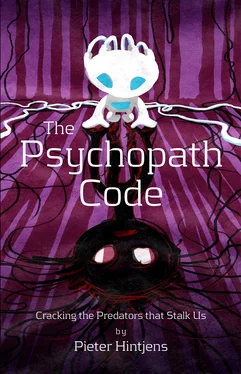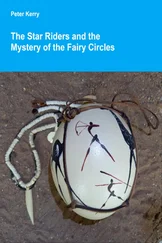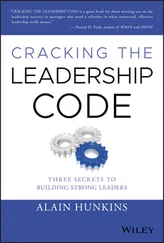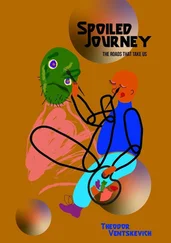It is likely that different species have invented the same emotions over and over. Many birds and mammals share emotions like happiness and sadness . Yet that does not mean their common ancestors already had them. Evolution often rediscovers the same solutions to what look like universal problems.
What follows are my personal theories, developed from observations and research. There are several theories of emotions. My goal is to model emotions as functional tools. I want to understand how they work and why we evolved them, rather than simply describe them. That lets us both understand what the psychopath is doing with their mind games, and how we respond. And that lets us extricate ourselves.
The meaning of an "emotion" can be hard to pin down. Is dread an emotion? Are joy, happiness, satisfaction, complacency, delight all distinct emotions? It’s somewhat like trying to identify colors or smells. The closer you look, the more there are.
I’m going to look only at primary emotions. By that, I mean emotions that do not overlap, and are not flavors or mixtures of other emotions. Much like primary colors.
Further, I’m going to define an emotion in a strict sense. This makes it easy to decide whether a particular state of mind counts, or does not. My hypothesis is that each emotion has its own distinct mental machinery. Each emotion evolved over time, and is coded in our DNA. Emotions are more or less active, according to age, character, and gender. In some people, some emotions are absent or invisible.
Emotions have two general goals. First, they prepare our mind and body for some action. They speed up certain systems and slow down others. I call this "orchestration." Imagine the emotion as the conductor waving a baton to get a hundred musicians to play the same tune.
Second, emotions display our mental and physical state to others. They do this using facial and body language. The language of an emotion is often based in real physiological activity. It may also be synthetic. Emotional languages are universal across humanity.
Some emotions are only about orchestration. Others are only about display. Most are a mix of the two.
For every display emotion, there is matching machinery to read facial and body language. This machinery works without conscious thought. It produces its results as emotions in the observer. When a dog threatens to bite you, you feel fear. When a person shows sadness, you feel sad. When a person laughs, you also want to laugh. We call this "empathy."
I’m going to take the human emotions, and collect them into groups. This grouping turns out to be a helpful approach. Each group works together like a puzzle, with the emotions as single consistent pieces. We can see when a group is complete. We can fit the emotions we recognize into their correct group. We can also see how each group works, as a whole.
The emotional groups evolved over time as our species climbed up the social ladder. I’ll work from oldest group to most recent:
❂ The predator emotions help us hunt and capture prey.
❂ The defense emotions prepare us to detect and deal with predators and competitors.
❂ The sexual emotions drive us to find sexual partners.
❂ The family emotions let us talk to our parents and care for our offspring.
❂ The tribal emotions let us form small social groups.
❂ The social emotions let us form looser and larger social groups.
My breakdown comes to about fifty universal human emotions. All humans, with specific exceptions, feel these emotions and feel them in the same way. That is my hypothesis, in any case. I expected to find a much smaller set of universal human emotions. Yet as you will see these are distinct and precise. Often I’ve had to name emotions that we know, yet rarely verbalize.
Like all our mental tools our emotions have continued to evolve and shift over time. So while human rage and dog rage share a common ancestor, they have evolved in their own directions. I’ll explain the human experience.
The predator emotions are what we feel when we stalk and prey on food animals. These are ancient and violent emotions. Some are taboo, even alien to most of us. We have to search for words to describe them. We rerouted these millions of years ago, as we started to develop our social instincts. You will recognize some from our daily rituals of eating.
Others are familiar from play. Watch children play hide-and-seek and you’ll see tame forms of obsession , euphoria , and glee . Play monster with a young child and you make caricatures of fury and bloodlust . Watch young men playing team sports or violent video games and you see the full range acted out in full. This is one reason people enjoy group sports. It lets players — and the crowd — express these emotions in a safe and accepted arena.
The predator emotions are:
❂ Hunger - the emotion of looking for prey. Hunger drives you out of your comfort zone. Your digestion slows. Your vision and hearing gets sharper and you focus on distinguishing prey from threats. You feel the need to move, yet you are careful to stay invisible. You walk without haste, and keep your posture relaxed. Your breathing is regular, slow.
❂ Obsession - the emotion of stalking a prey. Your digestion speeds up. Your hearing and vision fixate on your target, and exclude everything else. You crouch and stay hidden. You move towards your target, trying to appear as innocent as possible until the last minute. Your adrenalin starts to rise. Your memory starts recording in high resolution.
❂ Euphoria - the emotion of chasing a fleeing prey. Your hearing switches off and your vision tunnels in on your target. Your breathing and heartbeat accelerate. Blood flows to your muscles, and glucose feeds into your blood. Your eyes widen, your mouth opens, and you bare your teeth.
❂ Glee - the emotion of seeing your prey stumble. You feel a kick of pleasure and adrenalin. You exhale hard. Your body prepares to move in for the capture. Blood flows to your arms and face. You bare your teeth and open your mouth. The muscles around your eyes compress, to protect them. Glee looks like the ancestor of happiness.
❂ Fury - the emotion of attacking your prey. Your sense of pain switches off. Your vision narrows to a tunnel, and your eyes narrow to reduce the risk of damage. If you could move your ears, they would fold back. You exhale hard, to tighten your chest muscles and reduce the risk of a broken rib. You focus on capturing and immobilizing your prey. As you catch it, you feel intense bursts of pleasure that push you on.
❂ Bloodlust - the emotion of killing your prey. You feel an orgasmic climax of pleasure as you taste blood. Your lungs and heart are still working hard to purge your system of waste products from the chase. Your arms and hands and jaws clench. You still make no sound except a low groan. You’re focused on keeping your prey captive while you kill it. Your digestive system starts to prepare for food.
❂ Gluttony - the emotion of eating your prey. You feel more paranoid than usual. You are vulnerable to competitors looking for a free meal. If it is possible, you move your meal to a safe location. You lick your lips, glance left and right. Your eyes are wide. Your saliva glands are working full speed. Your digestive system is in full swing, expecting a full belly. When it is safe to eat, you focus on your food.
❂ Satiation - the emotion of having eaten enough or too much. Your saliva glands switch off, and you reject the remains of your meal, if any. You look around for others to share with. You adopt open body language, and relax. Blood flows to your digestive system. Your arms and legs are limp.
Читать дальше












